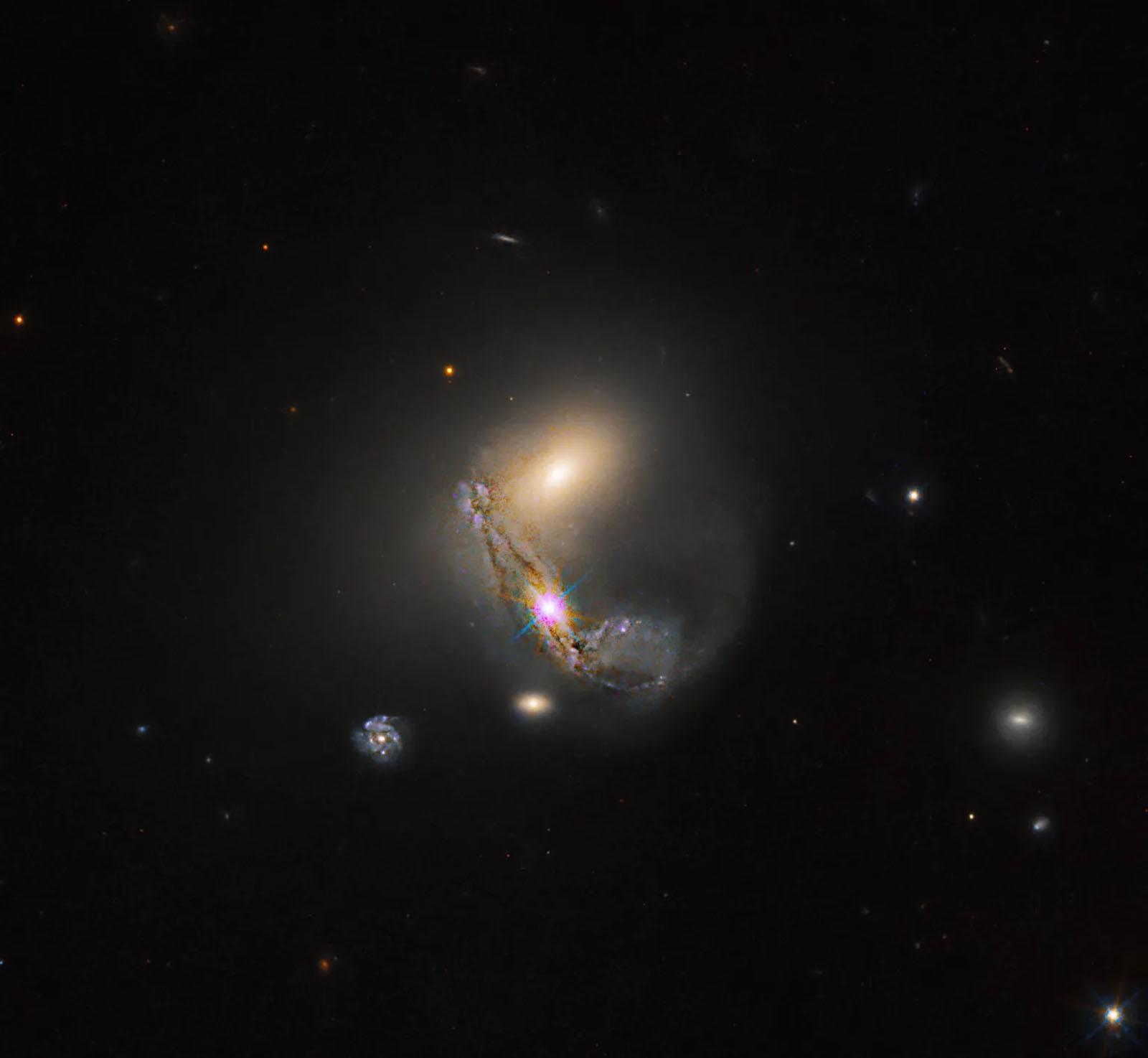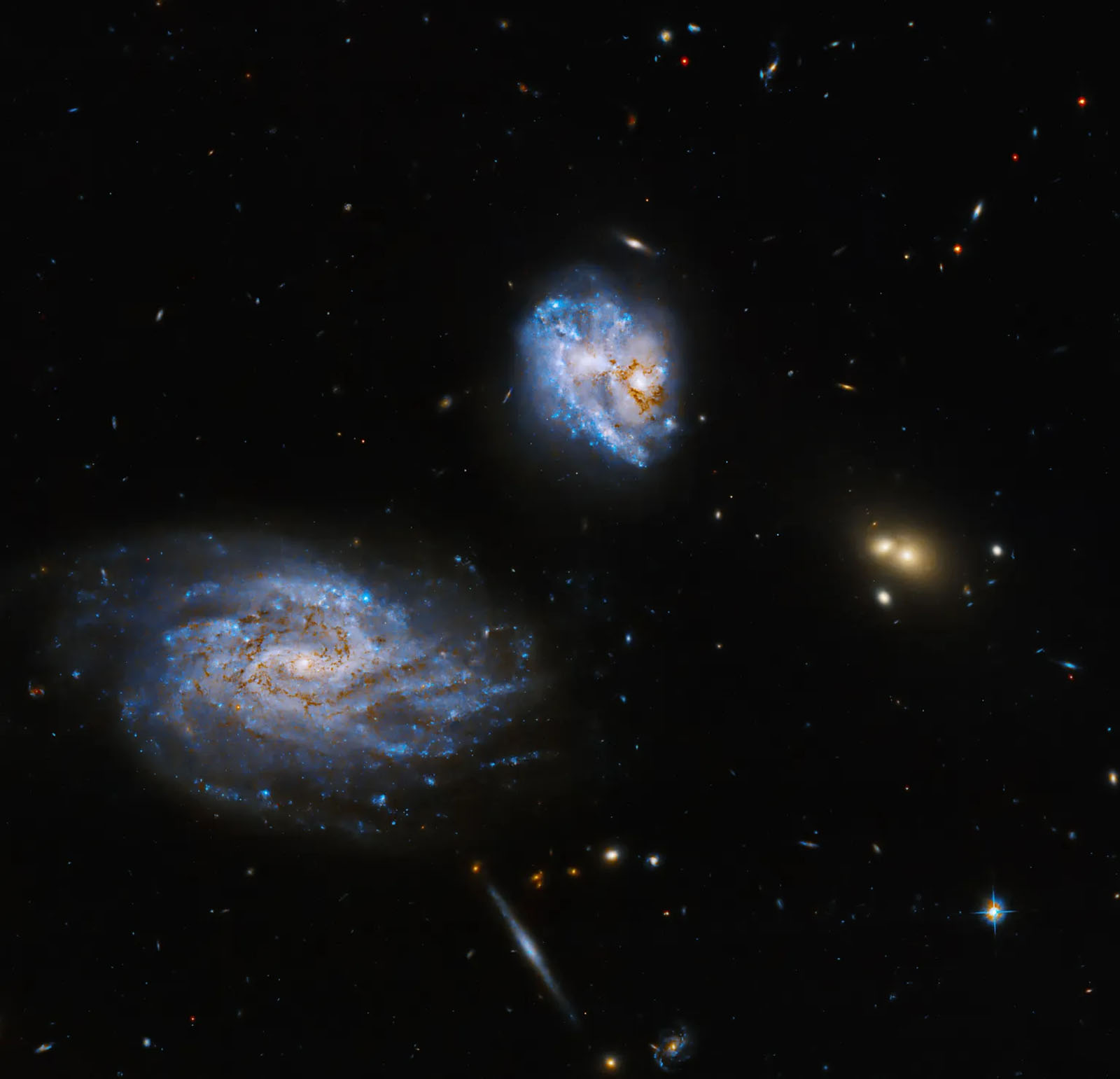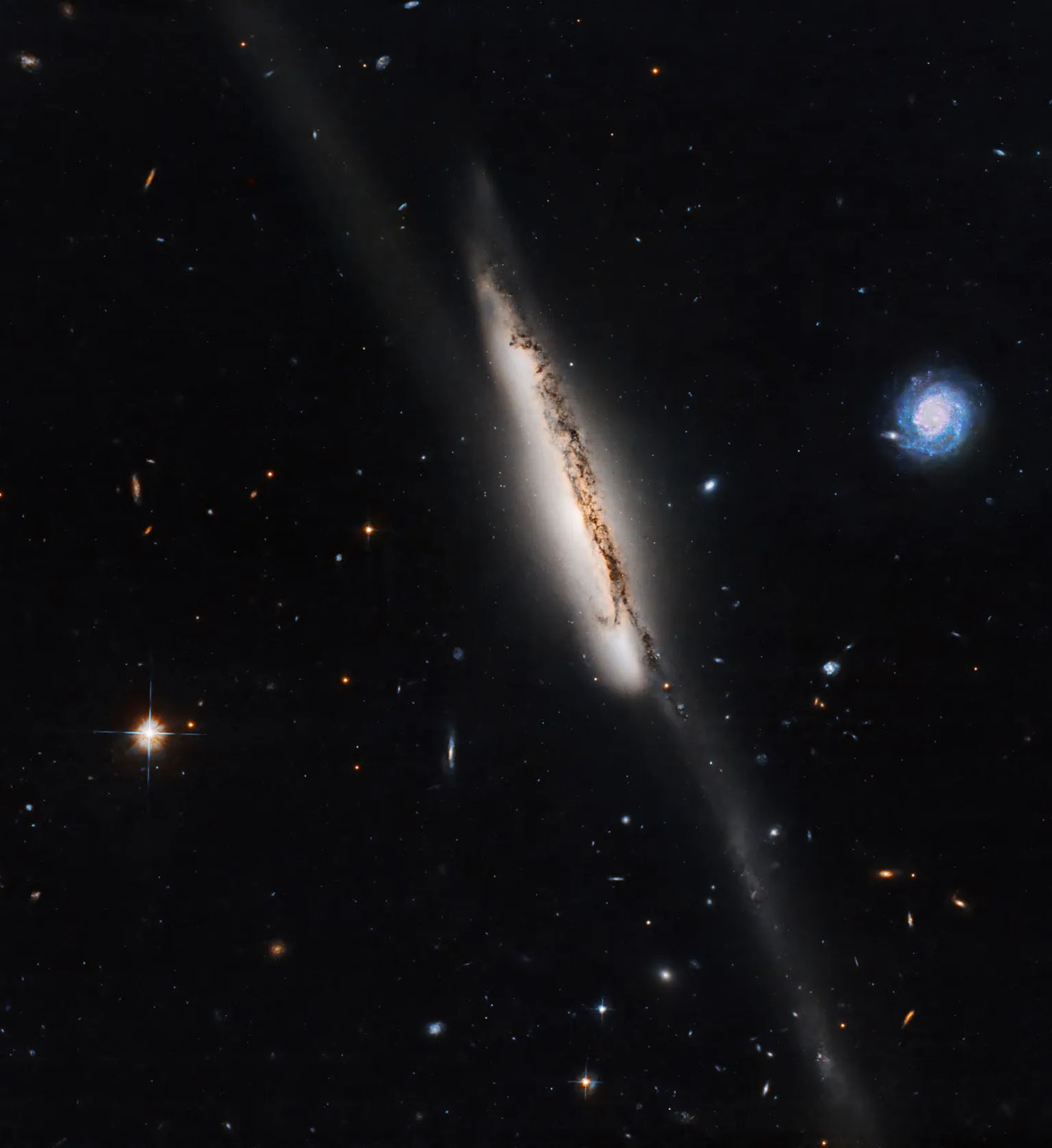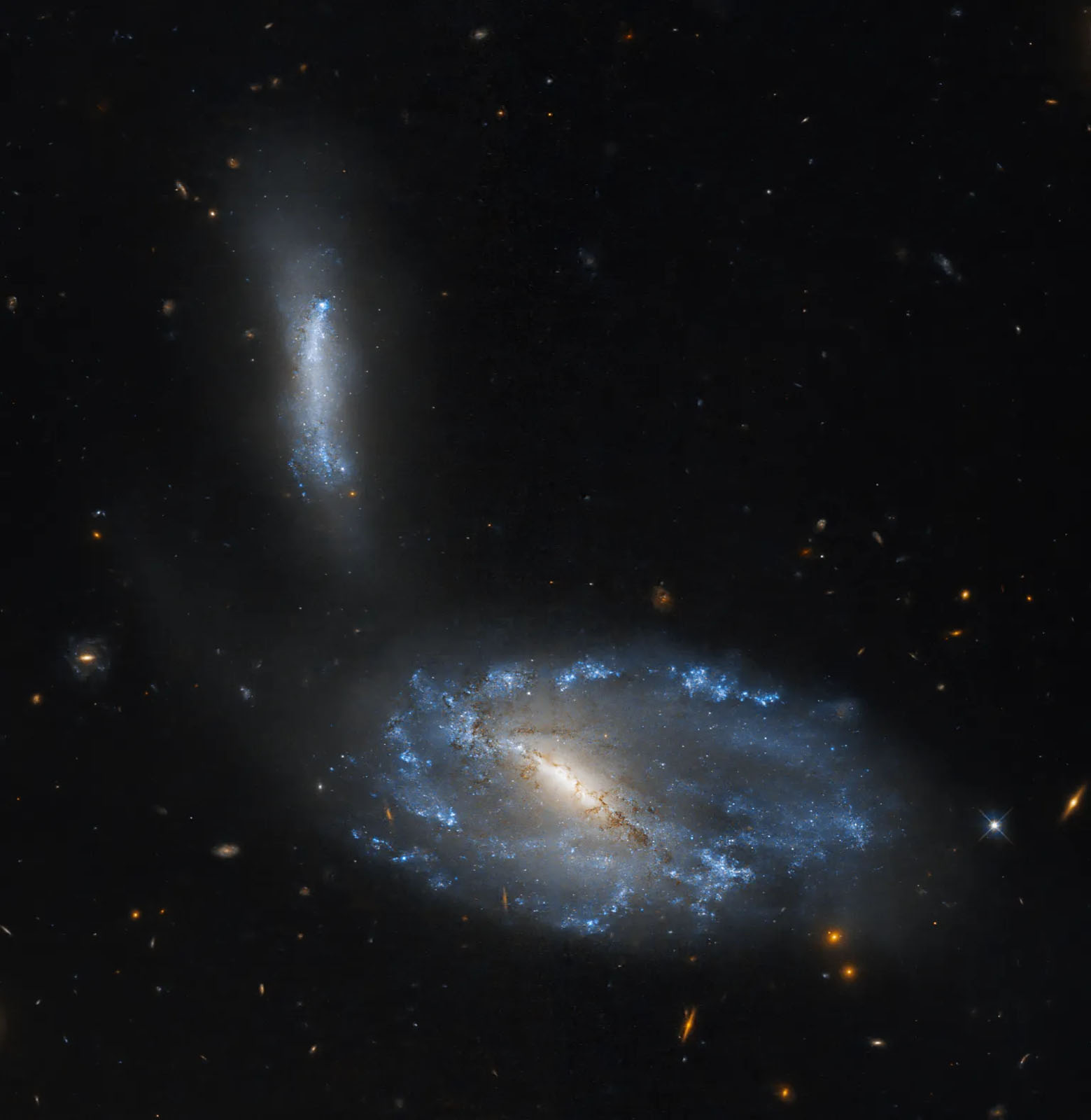A Galactic Interaction Smushed This Spiral Galaxy
The spiral galaxy UGC 3912 doesn’t look like much of a spiral in a new image captured by the Hubble Space Telescope. Its unusual and distorted shape is due to a gravitational encounter with a separate galaxy.
“When galaxies interact — either brush up against each other’s gravitational fields or even collide — their stars, dust, and gas can be pulled into new paths,” NASA explains in a news release. “UGC 3912 might have once been an organized-looking spiral, but it looks like it’s been smudged out of shape by a giant thumb.”
UGC 3912 is located in the constellation Canis Minor and is about 60.5 million light-years from Earth.
Despite their almost incomprehensible size, a galaxy’s appearance can change dramatically due to these sorts of interactions. Since there is such vast space between the stars in galaxies, they don’t crash into each other. However, their orbits can be affected by changes in gravitational forces. Even though these stars don’t smash into other stars, their new orbital paths change the overall shape and appearance of their host galaxy.
Astronomers pointed Hubble toward UGC 3912 as part of an ongoing investigation into supernovae activity concerning when stars at least times larger than the Sun explode as they reach the end of their lives. Hubble is examining Type II supernovae, which is a hydrogen-rich explosion.
While many Type II supernovae have been extensively studied, their extreme diversity in terms brightness and chemical composition remains difficult to understand.
The Hubble Space Telescope team has been highlighting cosmic collisions like UGC 3912’s for the past couple of weeks, with the final featured photo slated to arrive tomorrow, February 2. Some of the other interacting galaxies are featured below.




The complete gallery is available on NASA’s Hubble Space Telescope website.
Source link
